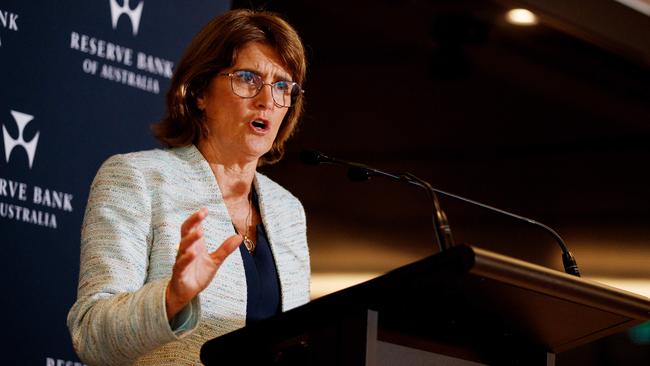Job market slowdown may have reversed, Reserve Bank warns
The recent loosening of Australia’s still-tight labour market may have stalled, the RBA has said, as it warned it could require more than one ‘good’ dose of inflation news before cutting rates.

Bumper job creation could delay interest rate cuts, with the Reserve Bank warning the labour market was showing signs of no longer weakening and the 4.1 per cent jobless rate was below “full employment”.
After chalking up a full year keeping the cash rate on hold, fresh minutes released from the RBA’s meeting a fortnight ago also noted that more than one “good” dose of inflation news may be required before it was confident price pressures were retreating.
While the labour market loosened through the second half of 2023, and wage pressures eased, the central bank board said this trend may have stalled or possibly reversed, with the unemployment rate unchanged since January.
The central bank forecasts unemployment will rise to 4.3 per cent by year’s end before later stabilising at 4.5 per cent by December 2025, a level the board said was in line with its estimate of full employment – the maximum level of employment consistent with holding inflation within the RBA’s 2 to 3 per cent target band.
But the recent run of strong hiring, fuelled by record government spending in public sector and care economy roles, spells bad news for household borrowers, with more analysts by the day pushing back their forecast for the RBA’s first rate cut to May, or beyond.
The explanation for why the central bank held the cash rate steady at 4.35 per cent comes as Jim Chalmers will on Wednesday foreshadow fresh Treasury forecasts, to be contained in December’s mid-year budget update, and highlight Labor’s economic achievements.
“Inflation has more than halved, underlying inflation is falling too,” the Treasurer will say, delivering a ministerial statement on the economy.
“Real wages are growing again, the economy is still expanding, a million new jobs have been created, the majority full-time.”

The RBA’s minutes released on Tuesday noted recent figures indicated the jobs market was beginning to tighten again.
“A number of indicators – including measures of underemployment, youth unemployment, job advertisements and surveys of labour availability – suggested that the easing in the labour market might have begun to stall or modestly reverse,” the minutes read.
“Against this backdrop, members noted that the risks of a rapid deterioration in labour market conditions might have diminished somewhat, though such a scenario could not be ruled out.”
In the event that the labour market remained resilient but inflation fell faster than expected, the meeting minutes hinted at the board’s threshold for a rate cut.
“(Board members) would need to observe more than one good quarterly inflation outcome to be confident that such a decline in inflation was sustainable,” the minutes read.
The RBA’s latest meeting minutes come after fresh job figures released last week showed a suite of labour market indicators remained remarkably resilient by historical standards, defying anaemic economic growth.

RBA governor Michele Bullock has previously cited the ongoing strength of the job market as a source of inflationary pressures, and one of the primary reasons the central bank may be forced to resume its aggressive run of rate hikes.
HSBC chief economist Paul Bloxham agreed the loosening of the labour market appeared to have “stalled”, with the unemployment rate “tracking sideways” in recent months.
“The labour market looks like it might not be loosening further and might not continue to put downward pressure on inflation,” Mr Bloxham said.
“That means the RBA won’t be able to cut interest rates soon, and may not be able to cut them all.”
In response to the labour market’s resilience, some economists have revised their rate cut bets, with analysts at NAB, RBC Capital Markets, Citi and Capital Economics pushing out their calls in the past week to May from earlier forecasts of February.
Meanwhile, bond traders are tipping the central bank will stay on the sidelines until May 20, a move that would put rate cuts perilously close to a federal election which the Albanese government must hold by May 24 at the least.
The lion’s share of new hiring in recent months has come from the public sector and other taxpayer-supported roles, with the expansion aided by record government spending.
AMP deputy chief economist Diana Mousina said strong job growth in so-called “non-market” sectors of the economy, covering health, education and the public service, was hamstringing Australia’s productivity performance.
“The growing share of the non-market or public sector is a key factor behind the slump in productivity growth in Australia,” she said.
On its most recent measure, productivity growth in the non-market sector tumbled 2.1 per cent in the year to June, yet productivity outcomes across the private sector excluding the mining industry has been much stronger, up 1.8 per cent over the same period.






To join the conversation, please log in. Don't have an account? Register
Join the conversation, you are commenting as Logout